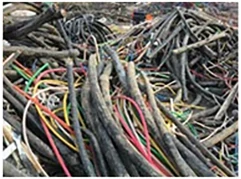
10 月 . 10, 2024 00:35 Back to list
Understanding Eddy Current Testing in Aluminum Applications
Eddy current testing is a widely used non-destructive testing (NDT) method that applies electromagnetic induction to detect flaws and measure conductivity in conductive materials, particularly metals like aluminum. This technique exploits the principle of electromagnetic induction, where an alternating current is passed through a coil to generate a magnetic field. When this magnetic field encounters a conductive material, such as aluminum, it induces circular electric currents, known as eddy currents, in the material.
Understanding Eddy Current Testing in Aluminum Applications
One of the key advantages of eddy current testing is its ability to detect small cracks, voids, and other discontinuities in aluminum components that may not be visible to the naked eye. The technique can also measure the thickness of aluminum coatings and assess the material's conductivity, which is essential in determining its quality and suitability for specific applications. For instance, in aerospace, a slight defect in an aluminum component can lead to catastrophic failures, making early detection imperative.

The process begins with a probe being placed close to the aluminum surface. As the probe moves along the material, it emits an alternating magnetic field that interacts with the aluminum, producing eddy currents. The flow of these currents varies based on the material properties and the presence of defects. The resultant changes in impedance can be measured and analyzed to assess the condition of the aluminum component. This real-time analysis allows operators to make informed decisions quickly.
While eddy current testing is particularly effective for aluminum, it does have limitations. It is primarily suited for conductive materials and may not be as effective in detecting defects in non-conductive coatings on aluminum surfaces. Additionally, the technique is sensitive to surface conditions, which means that surface roughness or contamination can affect measurement accuracy.
In conclusion, eddy current testing plays a vital role in ensuring the integrity of aluminum components across various industries. Its ability to detect flaws efficiently makes it an indispensable tool for manufacturers and quality assurance teams. As technology advances, the evolution of eddy current testing methods continues to enhance its effectiveness, paving the way for safer and more reliable aluminum applications in the future. This technique not only helps in maintaining high-quality standards but also contributes to the longevity and safety of aluminum products in critical applications.
Latest news
Unveiling the Power of Eddy Current Separator
NewsSep.25,2024
Transform Your Home Recyclin:home metal shredder
NewsSep.25,2024
The Future of Waste Management with Recycling Line Picker
NewsSep.25,2024
The Benefits of a Metal Recycling Plant
NewsSep.25,2024
Revolutionize Material Separation with Onwang Technology
NewsSep.25,2024
Innovative Waste Management: Unveiling the MSW Sorting Plant
NewsSep.25,2024